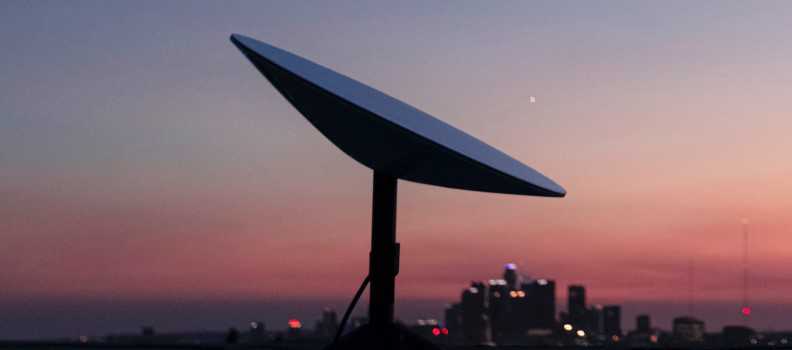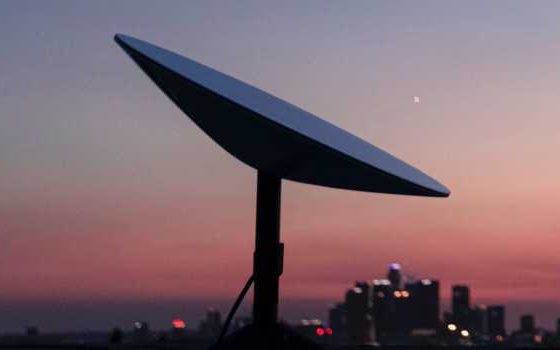

News
Starlink competitor Xfinity launches data caps, which SpaceX says it will not use
SpaceX’s Starlink project has a series of main competitors in the internet market, one of the largest being Comcast’s Xfinity. The Philadelphia-based Comcast recently announced that twelve U.S. states would be subjected to data caps in 2021, or limits on the amount of data one household will have access to before being charged extra fees. Statements from the company have described anything over 1.2 terabytes of data usage accessible with additional fees of $10 per extra 50 GB.
The extra charges for additional data usage are somewhat staggering, considering many households’ current economic situation and the fact that local governments are advising many residents to remain indoors due to the COVID-19 pandemic. This leaves many people at home for work and leisure, with the internet being one of the few constants that remain in everyday life. While cellular devices are usually connected to residential Wi-Fi, other devices, such as smart TVs and streaming devices, are constantly connected to at-home networks, leaving the amount of data being used on a constant rise.
But surprisingly, this fact is not recognized by Comcast, nor is it stopping them from implementing the data caps in the states of Connecticut, Delaware, Massachusetts, Maryland, Maine, New Hampshire, New Jersey, New York, Pennsylvania, Virginia, Vermont, West Virginia, and the District of Columbia, as well as parts of North Carolina and Ohio, The Verge originally reported.
Comcast to impose home internet data cap of 1.2TB in more than a dozen US states next year https://t.co/nsQqyixDH2 pic.twitter.com/rv0XVeqKsb
— The Verge (@verge) November 24, 2020
In fact, it could be a way to combat customers from leaving Comcast’s television subscription services in favor of more affordable and flexible streaming options that are offered by platforms like Hulu and YouTube. The streaming services operate through a streaming device, like an Apple TV or Roku device, and use data to operate. This all contributes to a house’s data usage, and because of its ability to broadcast live television programs, it will use a substantial amount of internet data over the course of the month.
Comcast says that its average customer uses 308GB per month and that 95 percent of its customers do not get close to using the 1.2 TB threshold. But no statistic measures the data used in homes with more than one internet user or outlines the number of devices used in a home. With more people teleworking and having to rely on the home internet for productivity, the data usage is likely higher than normal.
All of these scenarios bode well for Elon Musk’s Starlink internet satellite program, which is currently operating in the Beta stage. Interestingly, Starlink Engineers performed an Ask Me Anything session on the r/Starlink subreddit and revealed that the satellite internet infrastructure would not use data caps when it enters public operation. The company intends to keep the service free of caps and added that it would only be implemented if technically necessary.
The company wrote:
“So we really don’t want to implement restrictive data caps like people have encountered with satellite internet in the past. Right now we’re still trying to figure a lot of stuff out–we might have to do something in the future to prevent abuse and just ensure that everyone else gets quality service.”
SpaceX’s intention with Starlink was to provide internet service to rural and remote areas. But now that the service is being launched and tested in high population areas like Los Angeles, it is obvious that Starlink will aim to serve every human being on Earth. As long as data caps continue to remain out of Starlink’s plans, there is a good chance that many customers of large Internet Service Providers will switch over to the more affordable and more forgiving Starlink service.

Elon Musk
SpaceX issues statement on Starship V3 Booster 18 anomaly
The incident unfolded during gas-system pressure testing at the company’s Massey facility in Starbase, Texas.

SpaceX has issued an initial statement about Starship Booster 18’s anomaly early Friday. The incident unfolded during gas-system pressure testing at the company’s Massey facility in Starbase, Texas.
SpaceX’s initial comment
As per SpaceX in a post on its official account on social media platform X, Booster 18 was undergoing gas system pressure tests when the anomaly happened. Despite the nature of the incident, the company emphasized that no propellant was loaded, no engines were installed, and personnel were kept at a safe distance from the booster, resulting in zero injuries.
“Booster 18 suffered an anomaly during gas system pressure testing that we were conducting in advance of structural proof testing. No propellant was on the vehicle, and engines were not yet installed. The teams need time to investigate before we are confident of the cause. No one was injured as we maintain a safe distance for personnel during this type of testing. The site remains clear and we are working plans to safely reenter the site,” SpaceX wrote in its post on X.
Incident and aftermath
Livestream footage from LabPadre showed Booster 18’s lower half crumpling around the liquid oxygen tank area at approximately 4:04 a.m. CT. Subsequent images posted by on-site observers revealed extensive deformation across the booster’s lower structure. Needless to say, spaceflight observers have noted that Booster 18 would likely be a complete loss due to its anomaly.
Booster 18 had rolled out only a day earlier and was one of the first vehicles in the Starship V3 program. The V3 series incorporates structural reinforcements and reliability upgrades intended to prepare Starship for rapid-reuse testing and eventual tower-catch operations. Elon Musk has been optimistic about Starship V3, previously noting on X that the spacecraft might be able to complete initial missions to Mars.
Investor's Corner
Tesla analyst maintains $500 PT, says FSD drives better than humans now
The team also met with Tesla leaders for more than an hour to discuss autonomy, chip development, and upcoming deployment plans.

Tesla (NASDAQ:TSLA) received fresh support from Piper Sandler this week after analysts toured the Fremont Factory and tested the company’s latest Full Self-Driving software. The firm reaffirmed its $500 price target, stating that FSD V14 delivered a notably smooth robotaxi demonstration and may already perform at levels comparable to, if not better than, average human drivers.
The team also met with Tesla leaders for more than an hour to discuss autonomy, chip development, and upcoming deployment plans.
Analysts highlight autonomy progress
During more than 75 minutes of focused discussions, analysts reportedly focused on FSD v14’s updates. Piper Sandler’s team pointed to meaningful strides in perception, object handling, and overall ride smoothness during the robotaxi demo.
The visit also included discussions on updates to Tesla’s in-house chip initiatives, its Optimus program, and the growth of the company’s battery storage business. Analysts noted that Tesla continues refining cost structures and capital expenditure expectations, which are key elements in future margin recovery, as noted in a Yahoo Finance report.
Analyst Alexander Potter noted that “we think FSD is a truly impressive product that is (probably) already better at driving than the average American.” This conclusion was strengthened by what he described as a “flawless robotaxi ride to the hotel.”
Street targets diverge on TSLA
While Piper Sandler stands by its $500 target, it is not the highest estimate on the Street. Wedbush, for one, has a $600 per share price target for TSLA stock.
Other institutions have also weighed in on TSLA stock as of late. HSBC reiterated a Reduce rating with a $131 target, citing a gap between earnings fundamentals and the company’s market value. By contrast, TD Cowen maintained a Buy rating and a $509 target, pointing to strong autonomous driving demonstrations in Austin and the pace of software-driven improvements.
Stifel analysts also lifted their price target for Tesla to $508 per share over the company’s ongoing robotaxi and FSD programs.
Elon Musk
SpaceX Starship Version 3 booster crumples in early testing
Photos of the incident’s aftermath suggest that Booster 18 will likely be retired.

SpaceX’s new Starship first-stage booster, Booster 18, suffered major damage early Friday during its first round of testing in Starbase, Texas, just one day after rolling out of the factory.
Based on videos of the incident, the lower section of the rocket booster appeared to crumple during a pressurization test. Photos of the incident’s aftermath suggest that Booster 18 will likely be retired.
Booster test failure
SpaceX began structural and propellant-system verification tests on Booster 18 Thursday night at the Massey’s Test Site, only a few miles from Starbase’s production facilities, as noted in an Ars Technica report. At 4:04 a.m. CT on Friday, a livestream from LabPadre Space captured the booster’s lower half experiencing a sudden destructive event around its liquid oxygen tank section. Post-incident images, shared on X by @StarshipGazer, showed notable deformation in the booster’s lower structure.
Neither SpaceX nor Elon Musk had commented as of Friday morning, but the vehicle’s condition suggests it is likely a complete loss. This is quite unfortunate, as Booster 18 is already part of the Starship V3 program, which includes design fixes and upgrades intended to improve reliability. While SpaceX maintains a rather rapid Starship production line in Starbase, Booster 18 was generally expected to validate the improvements implemented in the V3 program.
Tight deadlines
SpaceX needs Starship boosters and upper stages to begin demonstrating rapid reuse, tower catches, and early operational Starlink missions over the next two years. More critically, NASA’s Artemis program depends on an on-orbit refueling test in the second half of 2026, a requirement for the vehicle’s expected crewed lunar landing around 2028.
While SpaceX is known for diagnosing failures quickly and returning to testing at unmatched speed, losing the newest-generation booster at the very start of its campaign highlights the immense challenge involved in scaling Starship into a reliable, high-cadence launch system. SpaceX, however, is known for getting things done quickly, so it would not be a surprise if the company manages to figure out what happened to Booster 18 in the near future.








